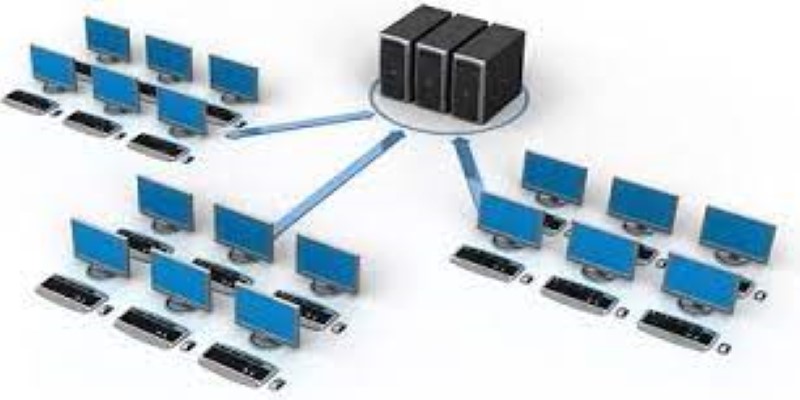
About Course
Computer networks are a growing trend. You can find them at your home, school, work, and most of the places you go daily.
Learn the basic concepts of computer networks, which hardware to use to set them up, and how to secure them.
- Become aware of networks surrounding you
When you start noticing networks around you, you will also understand a big part of the IT world. You will learn how the Internet works, how your Internet Service Provider (ISP) allows you to connect online, how do people share data without Internet access, and much more. Everything starts by becoming aware of computer networks.
- Learn how to set up a network
Whether you are taking this course to improve yourself, to get a better grade at school, or because of work, setting up a network is a skill that is very useful today. Yet many people do not know how to do it. You have an opportunity to learn it in few minutes.
- Learn how to protect yourself in a network, including the Internet
Unwanted sharing of passwords, pictures, documents, credit card numbers, and internet activity is not something anybody would want to share. But, with the expanded usage of computer networks, privacy is becoming an abstract term. This course helps you protect yourself when going online, and also protects your home/office network.
In this course you will learn network concepts, what are they and how do they work.
You will learn about network types, topologies, addresses, architectures, and communication modes.
In addition, you will learn about network hardware like modems, routers, and switches; and about transmission media like cables and electromagnetic waves.
The course also covers securing a network and securing yourself in a network.
It does not take a lot of time to take and view the course, but the knowledge you get will benefit your personal, and also your business life.
Who this course is for:
- The course is for everyone interested in learning about computer networks.
- Students that need help with network subjects.
- People who simply want to improve their knowledge about computer networks.
- Anyone who tried to learn about a computer network, but failed due to the lack of a perceivable image of it.
- People preparing for certification exams (such as CCNA).
Course Content
Computer Networks part 3
-
User Authentication Protocols: Part 1
14:34 -
User Authentication Protocols: Part 2
00:00 -
User Authentication Protocols: Part 3
00:00 -
User Authentication Protocols: Part 4 – Federated Identity Management
00:00 -
Transport Layer Security: Part 1
00:00 -
Transport Layer Security: Part 2 – TLS & HTTPS
00:00 -
Transmission Control Protocol (TCP) : Part 1
00:00 -
Wireless Network Security: Part 1
00:00 -
Wireless Network Security: Part 2
00:00 -
Wireless Network Security: Part 3 – WAP
00:00 -
Email Security: Part 1 – PGP
00:00 -
Email Security: Part 2 – S/MIME
00:00 -
IP Security: Part 1
00:00 -
IP Security: Part 2
00:00 -
Intrusion Detection: Part 1
00:00 -
Intrusion Detection: Part 2
00:00 -
Authentication, Authorization, Accounting, (AAA) – Part 1
00:00 -
Authentication, Authorization, Accounting (AAA) – Part 2
00:00 -
Other Public Key Cryptosystems: Part 1
00:00 -
Other Public Key Cryptosystems: Part 2
00:00 -
Computer Networks and the Internet: Part 2 – Transmission Media
00:00 -
Computer Networks and the Internet: Part 3
00:00 -
WIRED EQUIVALENT PRIVACY (WEP): Part 2
00:00 -
Fixing WEP Problems: Part 2
00:00 -
Wireless Application Protocol (WAP)
00:00 -
Fundamental Concepts of Computer Networks: Part 1 – PAN, LAN, MAN & WAN
00:00 -
Fundamental Concepts of Computer Networks: Part 2 – OSI & TCP/IP Model Explained
00:00 -
Internet & World Wide Web: Introduction & Key Concepts
00:00 -
Shortest Paths and Dijkstra’s Algorithm: Part 1
00:00 -
Shortest Paths and Dijkstra’s Algorithm: Part 2
00:00 -
Shortest Paths and Dijkstra’s Algorithm: Part 3 – Example
00:00 -
Net Neutrality
00:00 -
Location-based Services & Mobile Advertising: Opportunities & Challenges – Part 1
00:00 -
Location-based Services & Mobile Advertising: Opportunities & Challenges – Part 2
00:00 -
Connected Dominating Sets and its Applications: Part 1
00:00 -
Connected Dominating Sets and its Applications: Part 2 – Greedy Algorithm
00:00 -
Strategic Crowdsourcing Networks for Geosensing Applications: Part 1
00:00 -
Strategic Crowdsourcing Networks for Geosensing Applications: Part 2
00:00 -
Strategic Crowdsourcing Networks for Geosensing Applications: Part 3
00:00 -
Strategic Crowdsourcing Networks for Geosensing Applications: Part 4
00:00 -
Wireless & Mobile Networking: Introduction
00:00 -
Wireless & Mobile Networking: Facts and Trends: Part 1
00:00 -
Wireless & Mobile Networking: Facts and Trends: Part 2
00:00 -
Wireless & Mobile Networking: Facts and Trends: Part 3
00:00 -
Wireless & Mobile Networking: Facts and Trends: Part 4
00:00 -
Wireless & Mobile Networking: Facts and Trends: Part 5
00:00 -
Wireless Coding and Modulation: Part 1 – Introduction
00:00 -
Wireless Coding and Modulation: Part 2 -Shannon’s Theorem
00:00 -
Wireless Coding and Modulation: Part 3 – Hamming Distance
00:00 -
Wireless Coding and Modulation: Part 4 – FHSS & DSSS
00:00 -
Wireless Coding and Modulation: Part 5 -Doppler Shift
00:00
Student Ratings & Reviews

